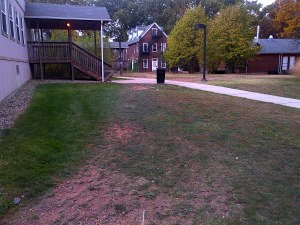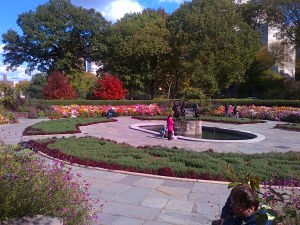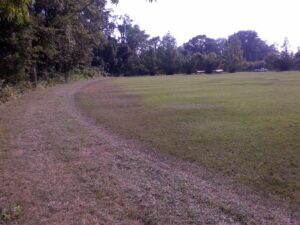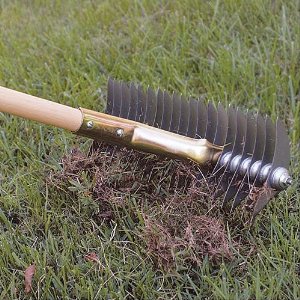By Jim Murphy
I mentioned in my previous post that dormancy has been apparent in many non-irrigated turfs. These conditions still persist throughout the central and northern NJ.
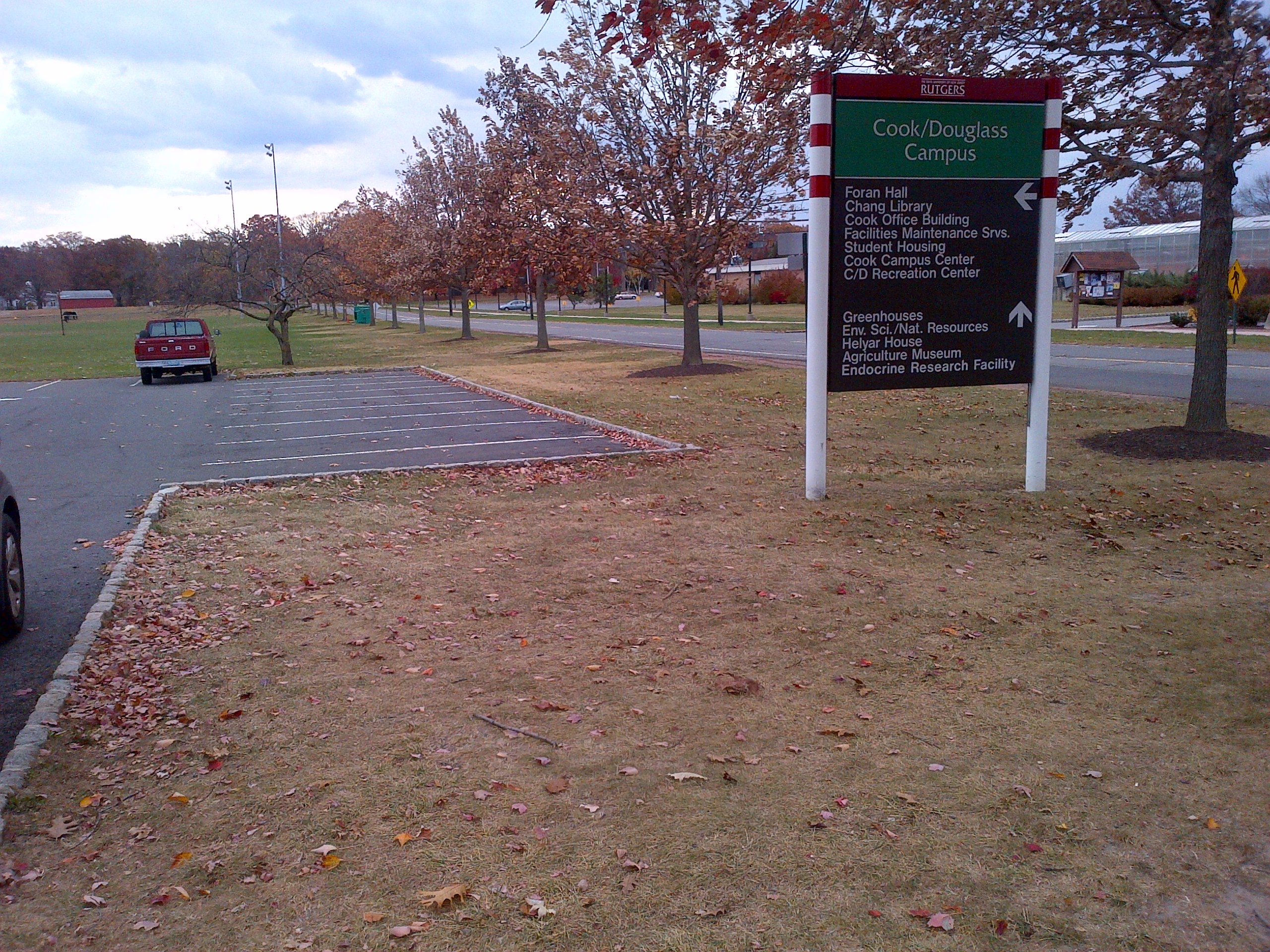
Drought induced dormancy in non-irrigated turf areas on Cook Campus of Rutgers University during early November.
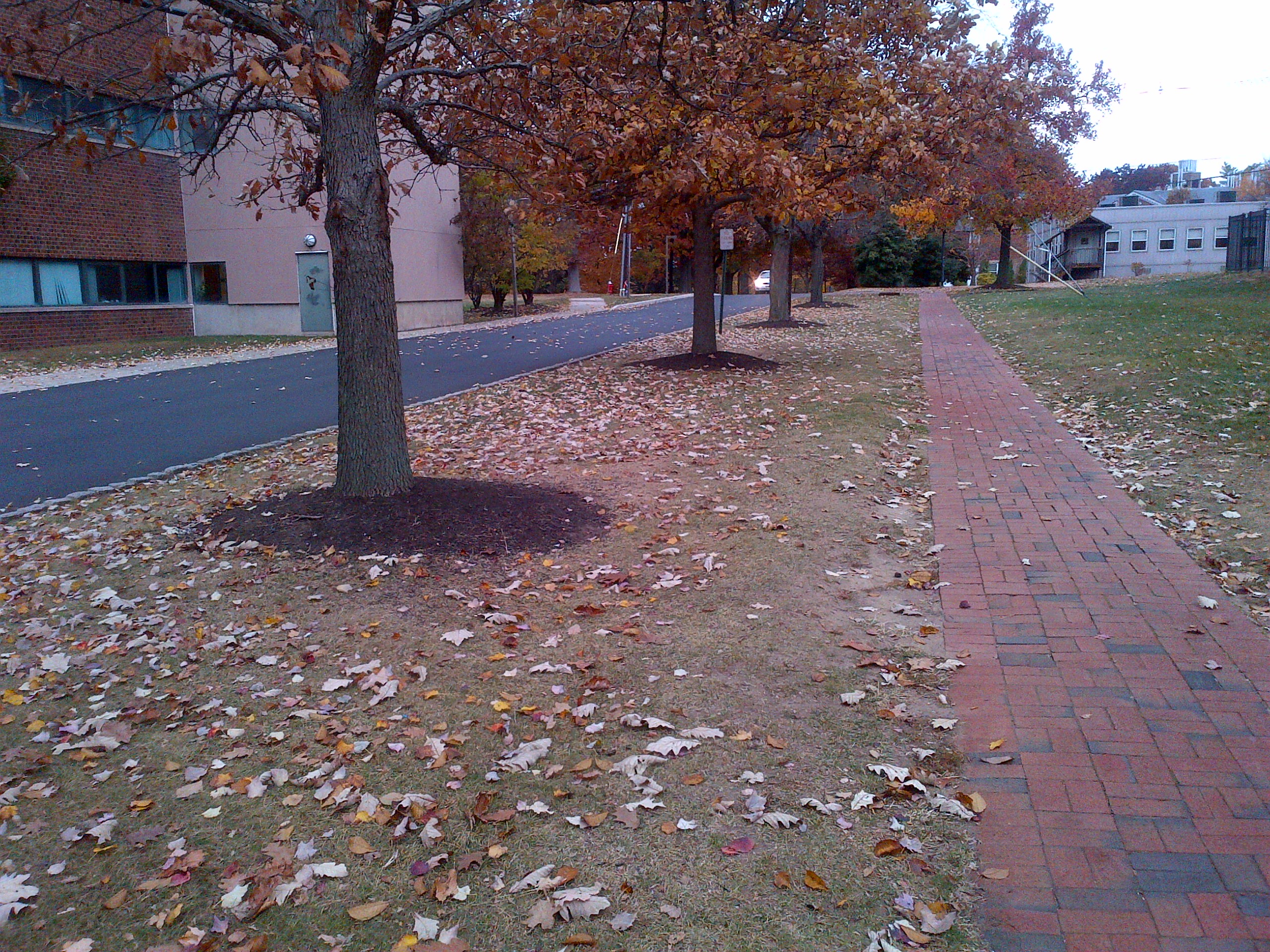
Drought induced dormancy under trees where the root competition and rain shadow effects have resulted in very dry soil conditions.
You can view the distribution and severity of the dry conditions throughout the northeastern U.S. at http://www.nrcc.cornell.edu/page_drought.html This map shows that southern NJ is not experiencing drought conditions; whereas, central NJ is experiencing abnormally dry conditions, and northern NJ is experiencing moderate drought. This dryness typically doesn’t last through winter but it is something to watch. Moreover, you should assess your landscapes for any potential susceptibility to winter desiccation.
I want to share a some observations and ideas that have come up while discussing this topic with turf managers.
- In those areas experiencing limited rain this fall, there has been very little recovery from summer stresses on non-irrigated turfs (and other plantings). These turfs may benefit from an application of a slow release N source to ensure recovery starts when water levels improve in late winter and early spring. Recall that NJ prohibits N applications to turf by professionals after December 1st (except on golf courses).
- While dry soil conditions this fall may have induced dormancy of the grass, the grass may be vulnerable to extended dryness through the winter especially in localized areas of turf that are sloped (water runs off) and exposed. These dry areas could experience desiccation damage if there are cold harsh winds combined with little to no snow or rain. If feasible, some irrigation of these areas before winter sets-in may be helpful in avoiding winter damage.
- Localized dry areas may have developed water repellency (become hydrophobic). These areas could benefit from an application of wetting agents to improve infiltration of rain and snow melt into the soil. Even if the soil is not hydrophobic, wetting agents will improve water infiltration of irrigation or winter precipitation.
Let’s hope that precipitation becomes more typical where it is currently dry.
Have a Happy Thanksgiving!
